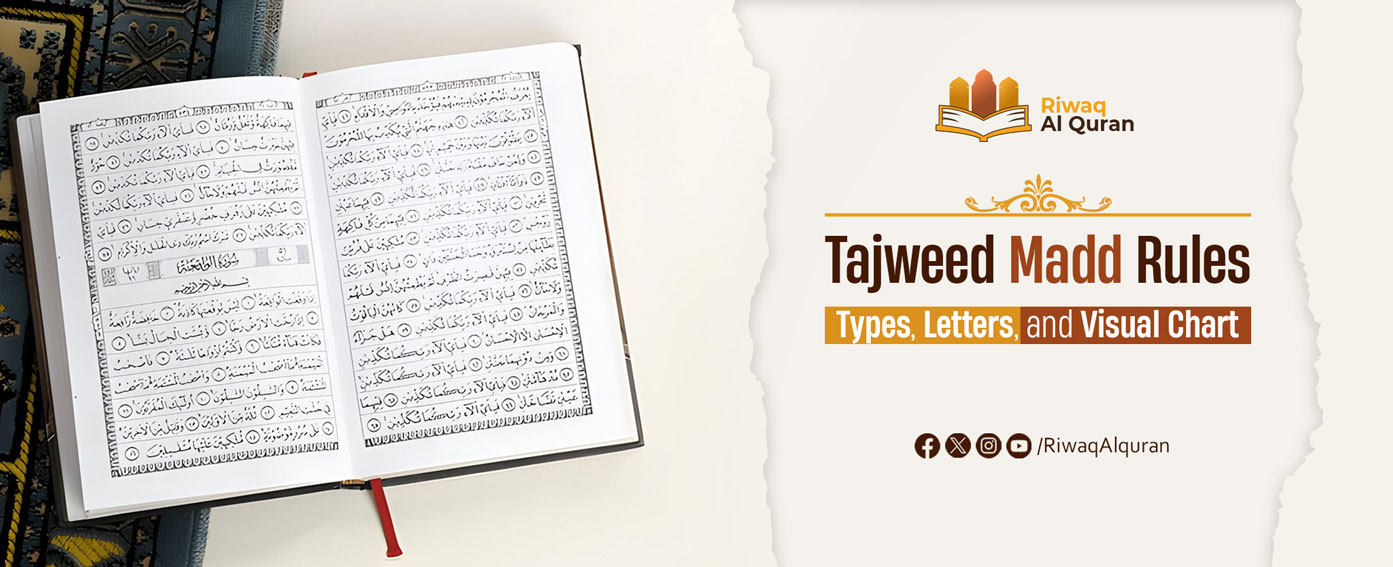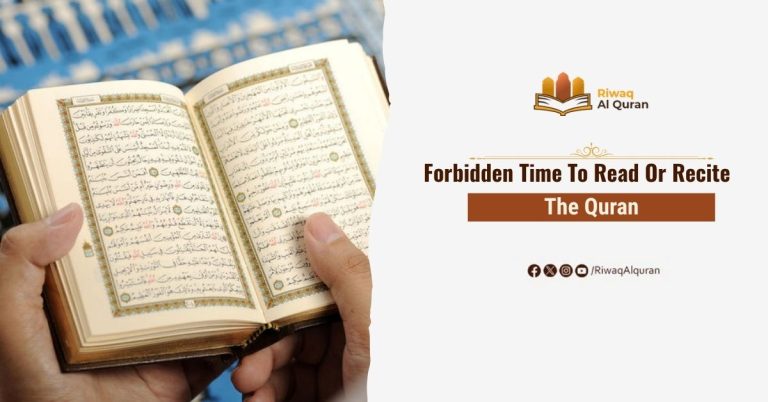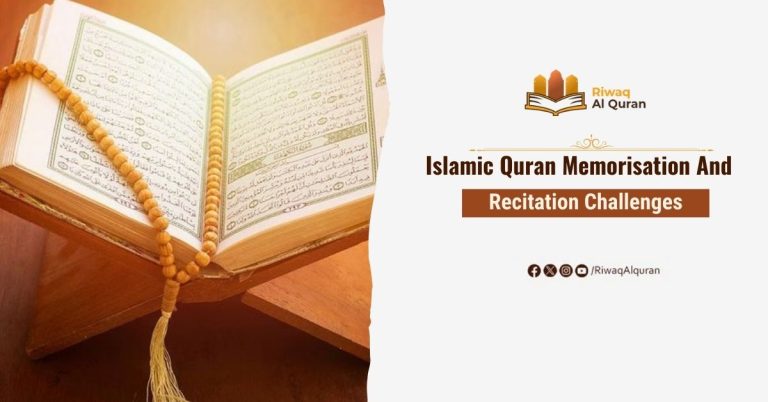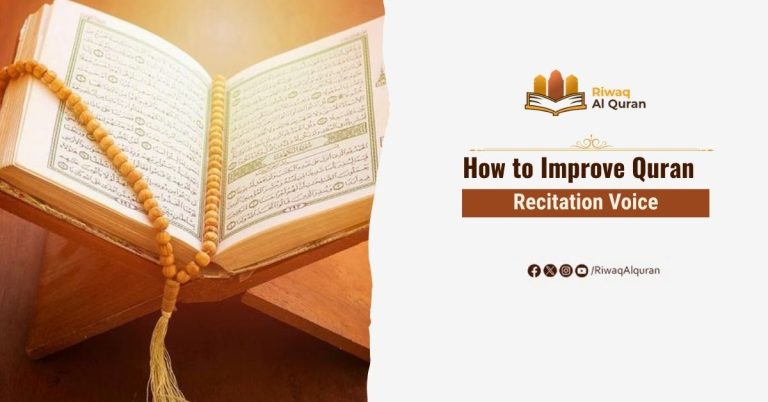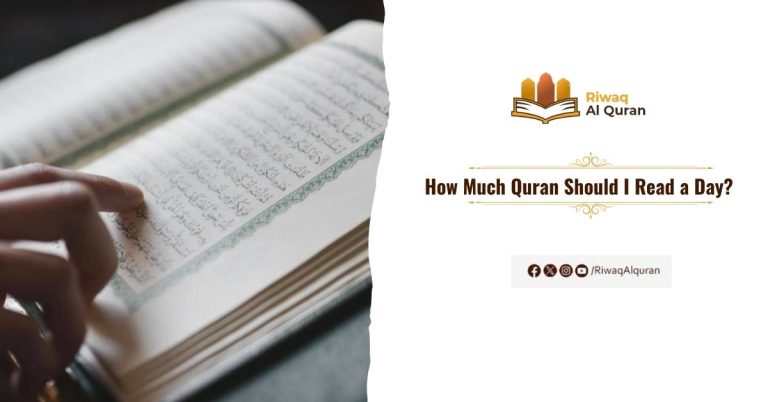Madd refers to the elongation of vowel sounds in Arabic, crucial for Quranic recitation. It includes Madd Asli (natural) and Madd Far’i (secondary), which are further divided into categories like Madd Lazim, Madd Jaiz, Madd Mutasil, and Madd Muntasir, each with specific rules for proper pronunciation.
So, if you have questions in mind like how many types of Madd are there, what is yaa Madd, what is normal Madd, what is Madd far ee, or what is Madd Laazim, you have landed on the right post. In this post, we discuss the different types of Madd and their examples in detail. But before moving to the types, let’s learn about Madd closely.
Table of Contents
Madd in Quran
What is Madd in the Quran? Madd indicates a prolonged vowel. It is the extension of the pronunciation of the vowel, occurring over any long vowel such as Madd Asli and Madd Faree.
It was narrated that Qatadah said: “I asked Anas: ‘How did the Messenger of Allah (PBUH) recite Quran?’ He replied: ‘Prophet Muhammad (PBUH) used to elongate the sounds.” [Sunan An-Nasa’i]
What Is Madd in Arabic Tajweed?
Madd in Arabic is “ إطالة الصوت بالحرف لفترة زمنية محددة”. This means to extend the pronunciation of the letter like the following examples:
- غفور – It is one of the names of Allah, and (و) is the place of Madd.
- السماء – It means the sky, and (ا) is the place of Madd.
- رحيم – It is one of the names of Allah, and (ي) is the place of Madd.
Letters of Madd
Now, what are the 3 Madd letters? Al-Madd in Tajweed comes with three letters (ا , و , ي) and they are collected in the Arabic word نُوحِيهَا. These letters must be silent without any vowel on them, but the letter which appears before the letter of Madd must not be hamza. Also, the letter must have a vowel that depends on the letter of Madd:
- If the letter of Madd is Alif (ا), the letter before must have a Fatha sign.
- If the letter of Madd is Waaw (و), the letter before must have a Dammah.
- If the Madd letter is Yaa’ (ي), the letter before must have a Kasra.
Note that the letter before the letter of Madd must have the mentioned vowels, or else Madd is not applicable, and the letter is not called the Madd letter. So, if the Madd letter is Waaw, and the letter before has the fatha sign in place of dammah, Madd will not be applied, and Waaw will not be a letter of Madd in this instance.
For example, in the word يومكم (your day), the letter Yaa’ has a Fatha, and the following Waaw is not a letter of Madd. Therefore, Madd is not applied in this case.
The Madd letter must remain silent without any vowel, but it should not have a Sukoon. If Sukoon is present, Madd is not applied. For example, in the word أولئك (they are), the letter (أ) has a Dammah and is followed by (و) with Sukoon, so Madd doesn’t apply here. Similarly, the letter ل has Fatha and is followed by ا without a vowel.
Types of Madd in Tajweed
What are the 2 types of madd? The two main types of madd are:
- Madd Asli/Tabi’y (Natural Madd) المد الأصلي
- Madd Far’ee (Secondary Madd) المد الفرعي
Madd Far’ee includes subtypes like Madd Lazim, Madd Jaiz, Madd Mutasil, and Madd Muntasir, each differing in conditions and duration of elongation.
Madd Asli is the natural extension of the vowel sound that is fixed and always lasts for two movements, making it a fundamental part of correct pronunciation.
Madd Faree, on the other hand, occurs as a result of specific conditions, such as the presence of a hamzah or Sukoon, and its length can vary depending on the context, ranging from two to six movements.
Keep reading for more details about each type with examples!
Madd Al-Asli (المد الأصلي) – Original Madd
Madd Asli refers to the natural or original Madd, which is essential for the pronunciation of certain words. This type of Madd doesn’t depend on external factors like a preceding or following hamzah or Sukoon. It is the natural extension of the vowel sound and is always maintained for exactly two movements or “harakat.” The character of the letter does not change, and it does not increase or decrease in length.
Definition
A letter cannot exist without this type of madd. It occurs when any of the three madd letters is preceded by hamza or sukoon.
Length
Two harakahs – A harakah is the duration of opening one of the fingers after making the closed fist, and two harakahs is the time it takes to open two fingers, one after another.
Reason for Name
- It is called madd asli as it has no causes for secondary madd, has a natural place as compared to other types of madd in Arabic, has a single form, i.e., the duration of only two harakahs, and the entity of the letter of madd is only said by pronouncing the madd itself.
- It is called madd tabee (natural) as a person naturally lengthens it for only two harakahs, neither more nor less than this.
Madd Asli Includes:
- The five alphabets mentioned separately at the start of some verses. These alphabets take the form of two letters, the second of which is the letter of madd. The letters can be found in the two words of حَي ٌ طَهُر. Madd asli examples are قَالَ – أَمْثَالُكُمْ – أَعْمَالُهُمْ وَقَالُوا – لِإِيلافِ – الْعَزِيزِ الْحَكِيمِ وَقِيْلَ – تُبْصِرُوْنَ – يُوْسُفُ – بُوْرِكَ – يُوْصِيْكُمُ – خَالِدِيْنَ
- Alif that is changed from the tanween that has a fat-ha like عَلِيمًا ِحَكِيمًا
- Alif with rectangular sukoon on it like:
- أنا whenever it appears in Quran
- لكنا in Al Kahf
- ( ِ أَنَا ِنَذِيرٌ ), ِ(لَكِنَّا ِهُو َ ِاللَّ َّ ُ ِرَ بِي),(الظُّنُونَاْ), ِ(الرَّ سُولا), ِ(السَّبِيلا)


Experience Riwaq Al Quran Classes
Watch real moments from our live sessions at Riwaq Al Quran and see how we bring learning to life. These clips highlight our interactive, student-focused approach—designed to keep learners engaged, motivated, and actively involved in every step of their educational journey.
Types of Madd Al-Asli
In addition to the basic natural Madd, there are specific extensions that apply under certain conditions. These additions follow the general rules of natural Madd but have their own unique characteristics based on the context in which they occur. Below are the main types of these additions:
1. Al-Madd Al-Iwad (مد العوض) – Substitution Prolongation at the End of a Word
This type of Madd occurs when a word that ends with tanween ( ـًـ) is followed by a stop (waqf). The tanween is replaced with an alif, and the Madd is extended naturally for two harakats.
Examples:
- ﴿عَلِيمًا﴾ [النساء: 11]
The word ends with tanween ( ـًـ), and when stopping, the alif replaces the tanween. This extension is treated as a natural Madd with two harakats.
Read more about: Madd Iwad
2. Madd Tamkeen (مد تمكين) – Prolongation Specific to Yaa and Waw
This Madd is applied when two consecutive yā’ letters appear in a word, with the first yā’ being doubled (shaddah) and the second yā’ being saakin (silent). The Madd allows for the proper pronunciation of the silent yā’ and is extended naturally.
Examples:
- ﴿حُيِّيتُم﴾ [النساء: 86]
The word contains a doubled yā’ followed by a silent yā’. The Madd occurs naturally to allow the proper pronunciation of the saakin yā’, with an extension of two harakats.
Read more about: Madd Tamkeen
3. Madd Al-Silah Al-Sughra (مد الصلة الصغرى)
This Madd is used when the pronoun “hā’ al-khināyah” (the pronoun “he/she”) is followed by a vowel sound that matches the vowel of the pronoun. This occurs when two words are connected.
Examples:
- ﴿إِنَّهُۥ كَانَ بِعِبَادِهِۦ خَبِيرَۢا بَصِيرٗا﴾ [الإسراء: 30]
The pronoun “hā’ al-khināyah” (ه) is followed by a vowel sound in the next word, creating a natural Madd when the words are connected. The Madd is two harakats long.
Read more about: Madd Leen
Madd Faree (مد الفرعي) – Secondary prolongation
Madd Faree refers to secondary or additional Madd that occurs due to a specific reason, such as the presence of a hamzah (glottal stop) or Sukoon (silent letter). These types of Madd are not natural and only occur in specific conditions, where the length of the Madd can increase beyond the usual two movements.
Definition
It is the type of madd which is added to madd asli for a certain reason.
Causes
Here are the two causes of the madd faree:
- Incorporeal. It is called this for where it has to do with the meaning. This doesn’t occur in the Hafs recitation reported from the Al-Shatibiyyah way. Still, it is permitted in some ways of Tayyibat Al-Nashr.
- Lexical. It is called this because a certain letter leads to the lengthening of the madd faree more than the madd asli.
Rules of Madd Faree
Here are the three important rules for the madd faree:
- Compulsory – It is applied only to madd mutassil, due to the consensus to lengthen it more than madd asli in different recitations.
- Permissible – It pertains to madd munfasil, madd ‘arid lil-sukun, and madd badal because it is allowed either to shorten or lengthen them.
- Absolutely Necessary – It only concerns the madd lazim as it has only a single case of madd, i.e., six harakahs in all recitations.
Types of Madd Faree
The types of Madd Faree in Tajweed include five key forms: Madd Al-Muttasil (mandatory prolongation when a Madd letter connects to a hamzah in the same word), Madd Al-Munfasil (optional extension when the hamzah is in the next word), Madd Al-Badal (substitution prolongation caused by a preceding hamzah), Madd Al-Aarid Lissukoon (temporary elongation when stopping on a word with a Sukoon), and Madd Al-Laazim (necessary prolongation due to a permanent Sukoon). Each type follows specific rules for extending the Madd between two to six movements, enhancing fluency and melody in Quranic recitation.
Lets discuss them in details”
1. Al-Madd Al-Muttasil (مد متصل) – Connected prolongation
This type of Madd occurs when a Madd letter is followed directly by a hamzah within the same word. The Madd is extended as a result of the connection to the hamzah.
Examples:
- ﴿مَآءٌ﴾ [Al-Mu’minun: 33]
- ﴿السمآء﴾ [Al-A’raf: 54]
- ﴿أوليآء﴾ [Al-Mumtahanah: 1]
Here, the Madd is obligatory and must be extended for four or five movements, and it can be extended further when pausing.
2. Al-Madd Al-Muttasil (مد متصل) – Connected prolongation
This occurs when a Madd letter is followed by a hamzah, but the hamzah is in a separate word. This type of Madd can be extended for four or five movements, but it is optional.
Examples:
- ﴿يَا أَيُّهَا﴾ [Al-Baqarah: 183]
- ﴿إلى أَنْ﴾ [Al-Mumtahanah: 1]
- ﴿قَالُوا إِن﴾ [Al-Mumtahanah: 10]
In this case, the extension of the Madd is optional, and it can be either four or five movements, with the possibility of shortening it to two movements in some recitations.
3. Al-Madd Al-Badal (مد البدل) – Substitution prolongation
This occurs when a hamzah precedes a Madd letter in the same word, without a hamzah or Sukoon after the Madd letter. This results in a substitution of the hamzah with a Madd.
Examples:
- ﴿آمِنُوا﴾ [Al-Baqarah: 8]
- ﴿إِيمَانًا﴾ [Al-Insan: 30]
- ﴿أُوتُوا﴾ [Al-Imran: 3]
This type of Madd is always extended for two movements, similar to the natural Madd.
4. Al-Madd Al-Aarid Lissukoon (مد عارض للسكون) – Temporary Prolongation due to a Stopping Condition
This occurs when a Madd letter is followed by a temporary Sukoon, usually caused by pausing. The Sukoon is not present in the continuous form of the word.
Examples:
- ﴿الحَمْدُ لِلَّهِ رَبِّ الْعَالَمِينَ﴾ [Al-Fatiha: 2]
This type of Madd can be extended in three ways: two movements (short), four movements (medium), or six movements (long), depending on the reciter’s style.
Read more about: Al-Madd Al-Aarid Lissukoon
5. Al-Madd Al-Laazim (مد لازم) – Necessary prolongation
Madd Lazim occurs when a Madd letter is followed by a permanent Sukoon in the same word, and it is obligatory to extend the Madd for six movements.
Examples:
- ﴿الحَاقَّةُ﴾ [Al-Qari’ah: 1]
- ﴿الضَّآلِّينَ﴾ [Al-Fatiha: 7]
This type of Madd must be extended for exactly six movements, both when pausing and connecting. There are rare cases where a different length might be accepted, like in the word “عين” in Surah Maryam.
Madd Tajweed Rules Chart
The Madd Tajweed rules are essential for correct pronunciation and proper recitation of the Quran. These rules guide how to elongate certain vowels and sounds, enhancing the clarity and beauty of the recitation. Below is a chart outlining the key Madd rules for a deeper understanding.
How to Learn Madd?
Learning Madd in Tajweed is essential for accurate and beautiful Quranic recitation. It involves elongating certain vowels and sounds according to specific rules. Here are six tips to help you master Madd in your recitation.
1. Start with the Basics
Begin by familiarizing yourself with the concept of Madd in Tajweed. Understand the different types of Madd and their significance in the Quranic recitation.
2. Practice the Correct Pronunciation
Focus on mastering the correct pronunciation of Arabic letters and sounds. Proper articulation is essential for accurate Madd recitation.
3. Listen to Skilled Reciters
Listen to Quranic recitations by expert reciters to familiarize yourself with the proper application of Madd in context. Try to imitate their rhythm and tone.
4. Break Down the Rules
Understand and memorize the specific rules of Madd, such as Madd Asli, Madd Far’i, and Madd Munfasil. Break the rules down into smaller parts to make learning easier.
5. Recite Slowly and Focus on Elongation
Start reciting at a slower pace to focus on the elongation of the sounds. Gradually increase your speed as you become more comfortable with the rules.
6. Seek Feedback from a Teacher
If possible, learn under the guidance of a qualified Tajweed teacher who can give you constructive feedback and correct your mistakes.
Read also: Comparison between Madd Mutasil and Madd Munfasil With Examples


Why Students Love Learning with Riwaq Al Quran
Hear directly from our students about how Riwaq Al Quran Academy has transformed their connection with the Book of Allah. Their experiences reflect the dedication, care, and quality that guide every step of our teaching.
Learn Tajweed Online with Us
Madd is a very important rule in Tajweed since it plays a vital role in understanding the meanings of the Quranic verses. The Messenger of Allah (PBUH) used to read Quran with elongations of the sounds like we are taught today in the Tajweed rules. Leaving out the Madd, therefore, means we are not reading the Quran the way it was revealed. So, it is crucial to learn the proper way of reciting the verses and understand the different types of Madd in Quran and their applications.
We, at Riwaq Al Quran, present online courses to help our Muslim brothers and sisters improve the Quran recitation and gain Allah’s satisfaction. Our qualified tutors teach Quran in the most affordable and efficient way, enabling students to read the verses with the correct pronunciation. So, to understand the types of Madd and become well versed in their application, join our Online Tajweed Classes today.
We offer several courses such as:
- Online courses for kids.
- Online Quran classes for kids and adults.
- Online Arabic courses
- Online Ijazah courses
- Online Islamic Studies courses.
Here are a sample of our set of Quran Courses that will be helpful for you:
- Online Tafseer Course: Delve into Quranic meanings with our insightful online Tafseer course.
- Noorani Qaida Online: Learn Quranic basics efficiently through our Noorani Qaida online program.
- Online Quran Recitation Course: Enhance Quranic recitation skills through our expert-led online course.
- Online Tajweed Classes: Master Tajweed rules for beautiful Quranic recitation in online classes.
- Quran Memorization Online Course: Memorize the Quran effectively with our specialized online memorization course.
- Online Qirat Course: Explore diverse Qirat styles with our comprehensive online Qirat course.
- Online Quran Classes for Kids: Nurture a love for the Quran in kids through interactive online classes.
Conclusion
Madd in Arabic is the elongation of vowel sounds, crucial for proper pronunciation in Quranic recitation. It is divided into Madd Asli (natural elongation) and Madd Far’i (secondary elongation), with the latter further categorized into types such as Madd Lazim, Madd Jaiz, Madd Mutasil, and Madd Muntasir, each defined by specific rules and elongation durations.
Understanding these types enhances the reciter’s ability to convey meaning accurately and adhere to Tajweed rules. Mastery of Madd contributes to the beauty and clarity of Quranic recitation, reflecting its importance in Islamic practice.

